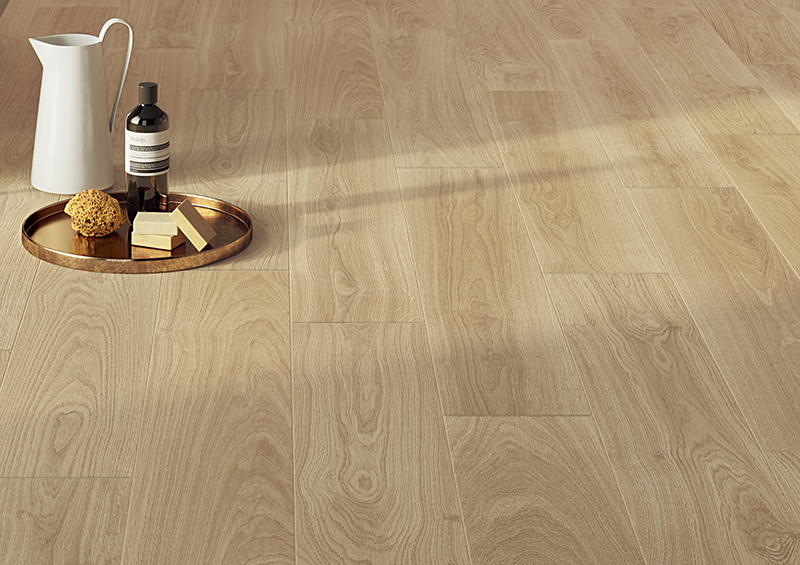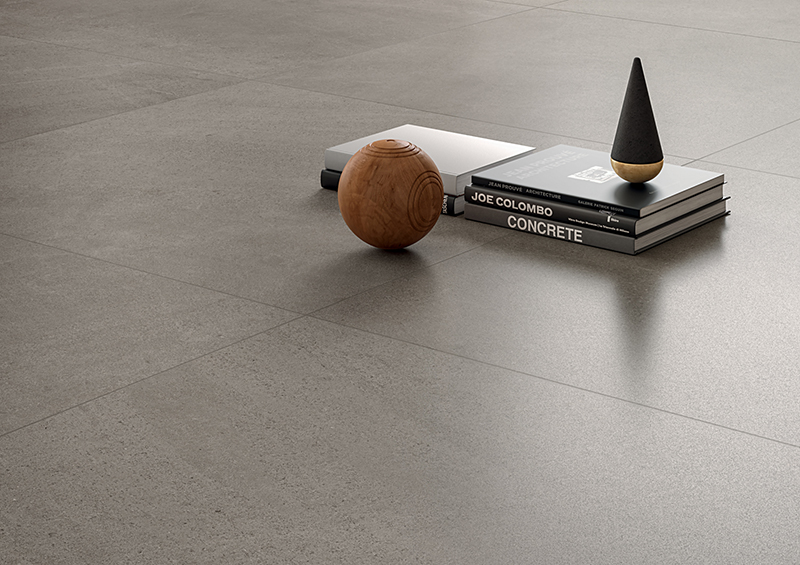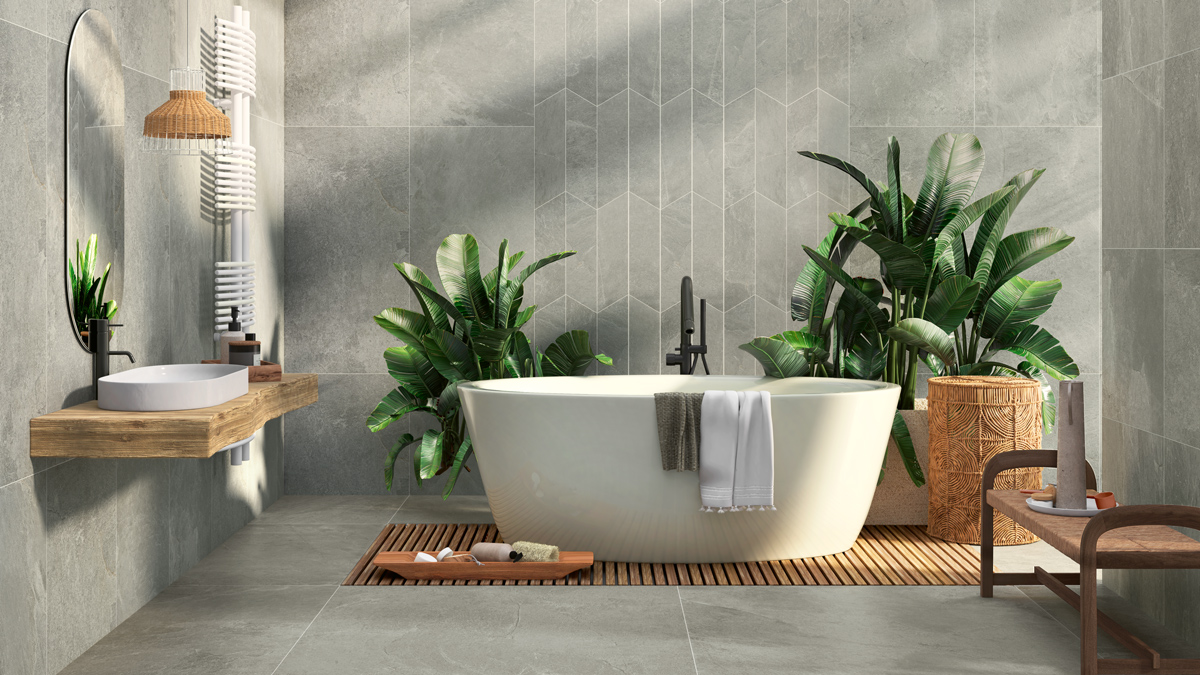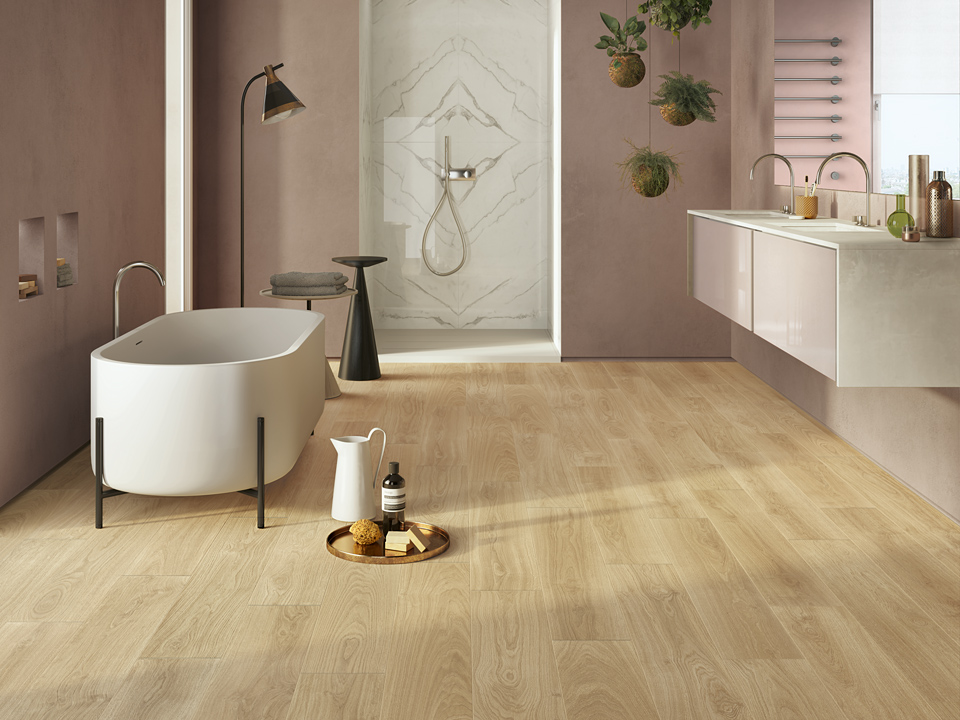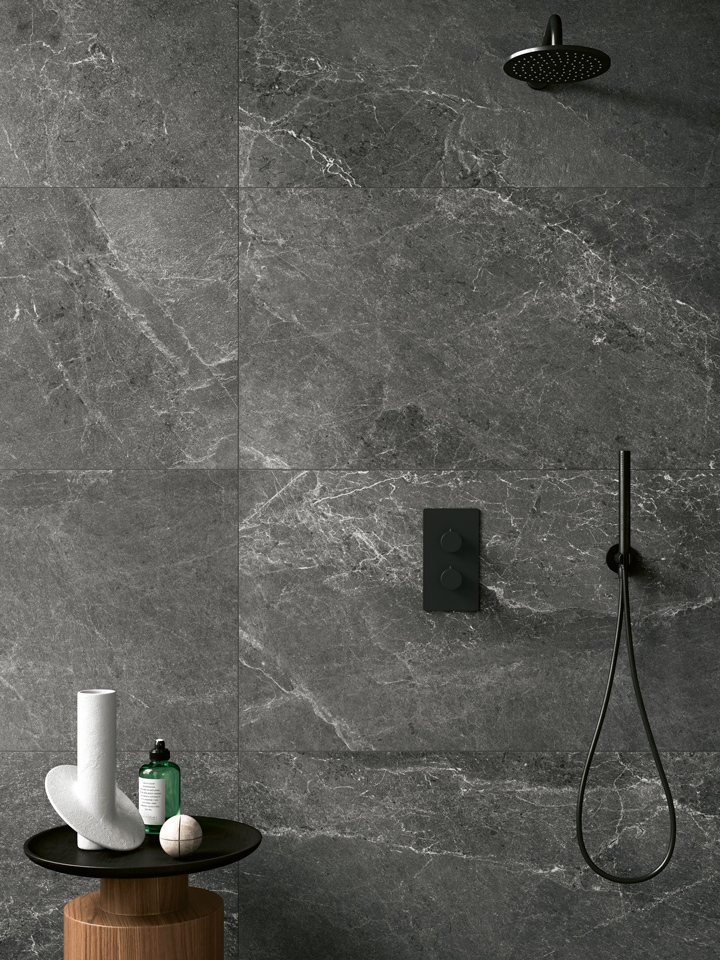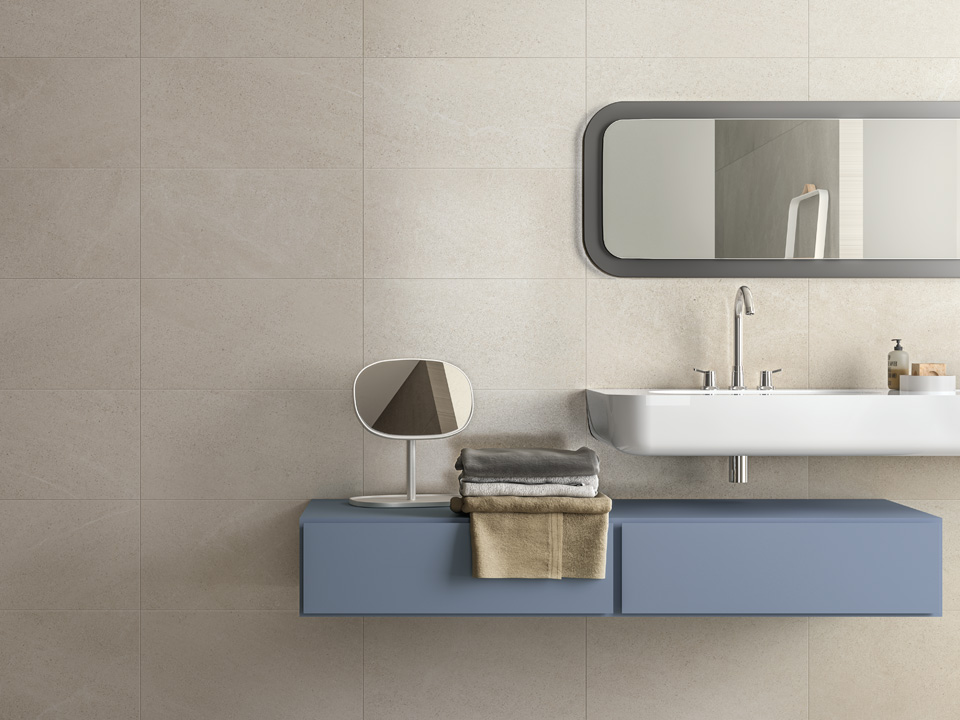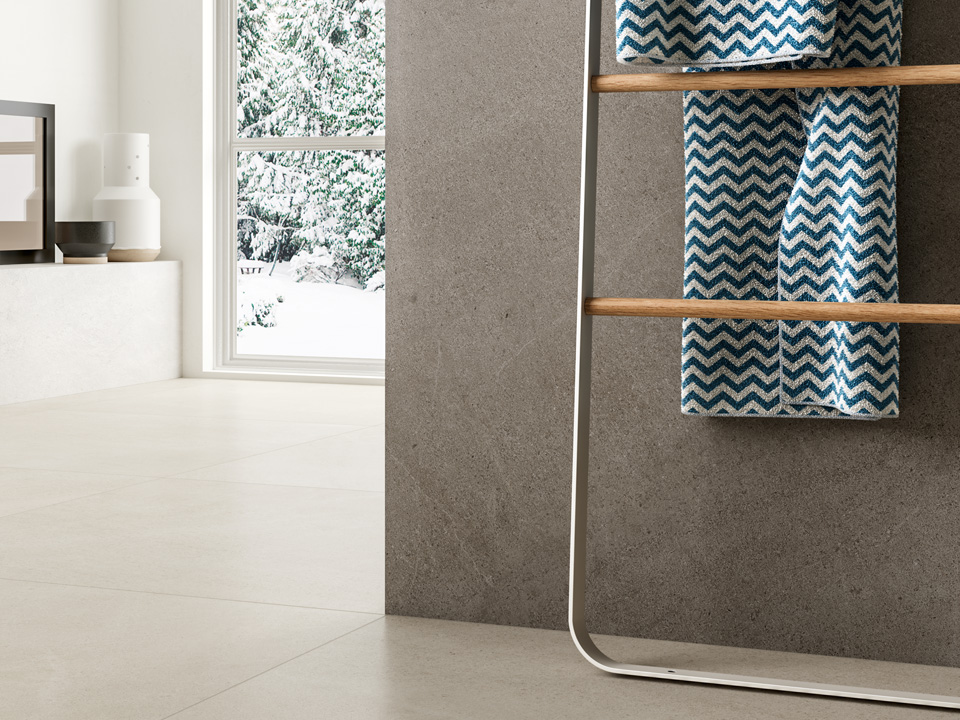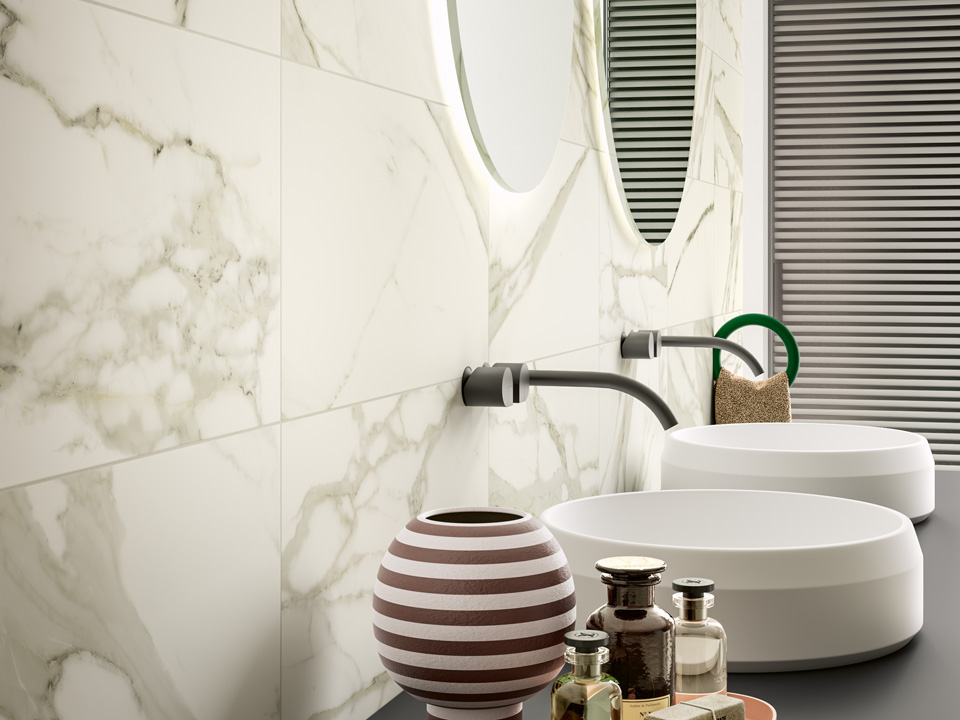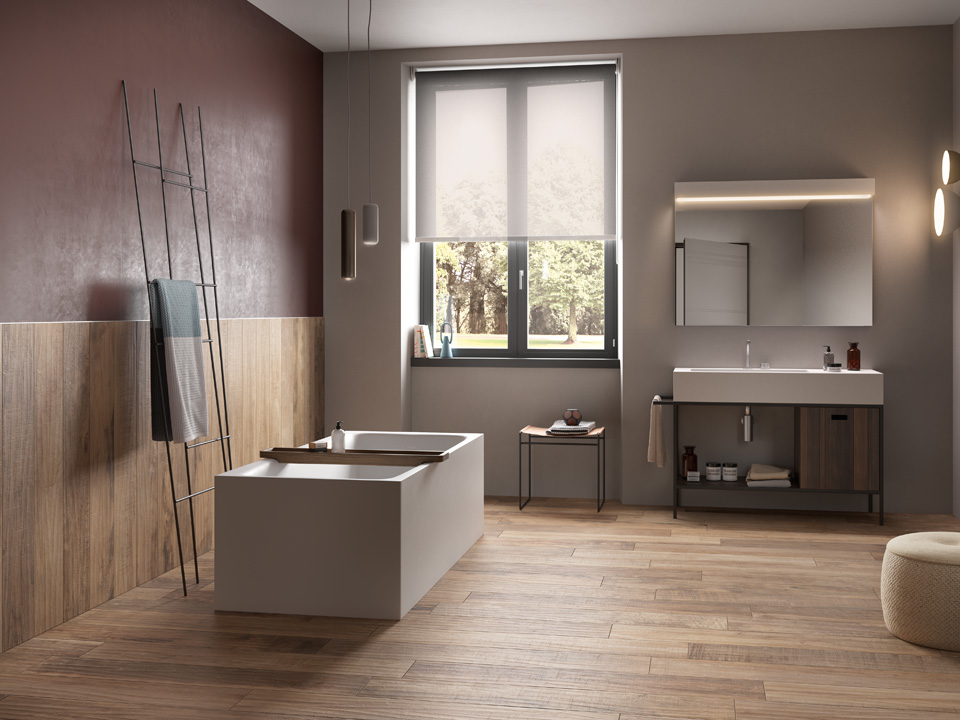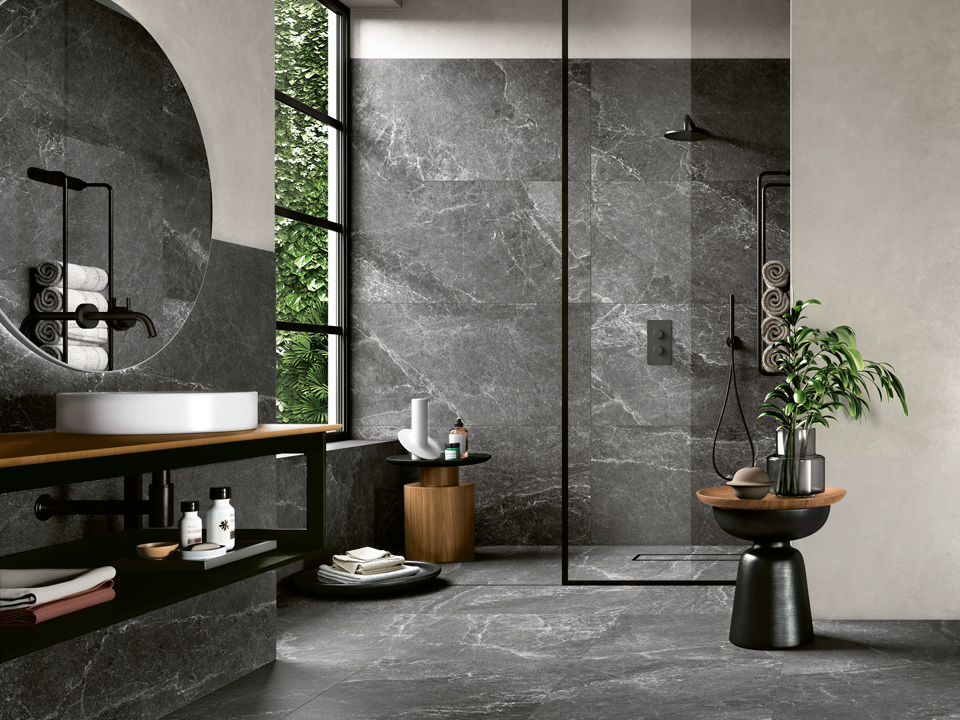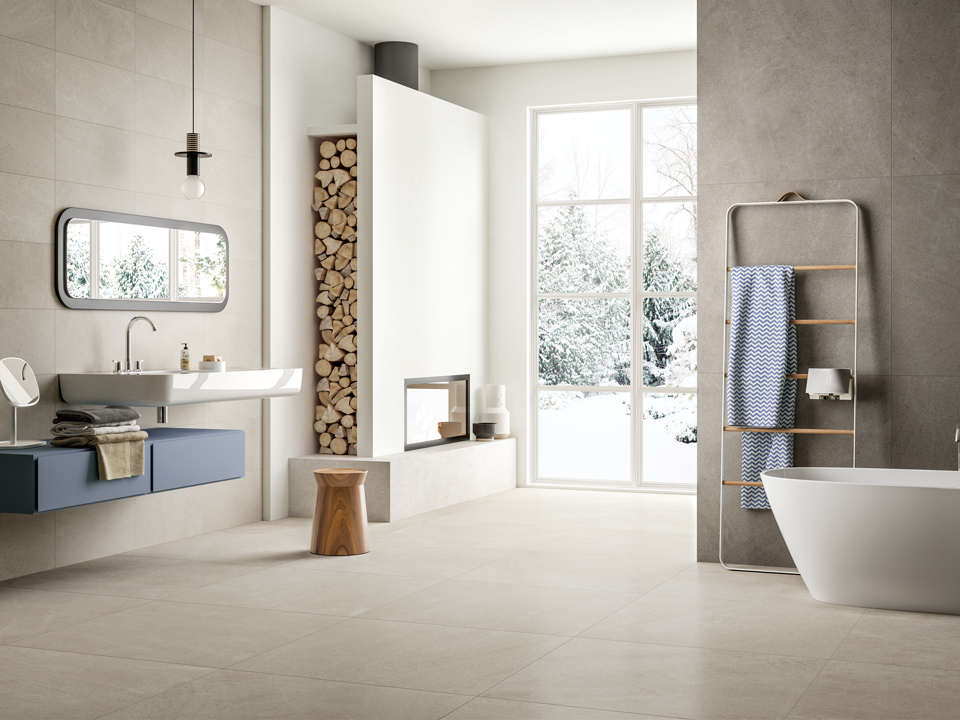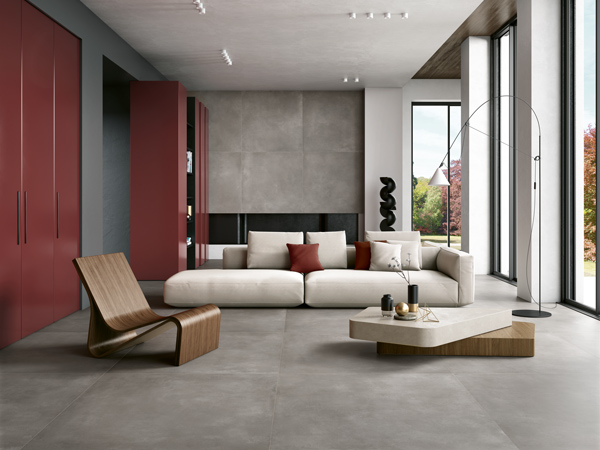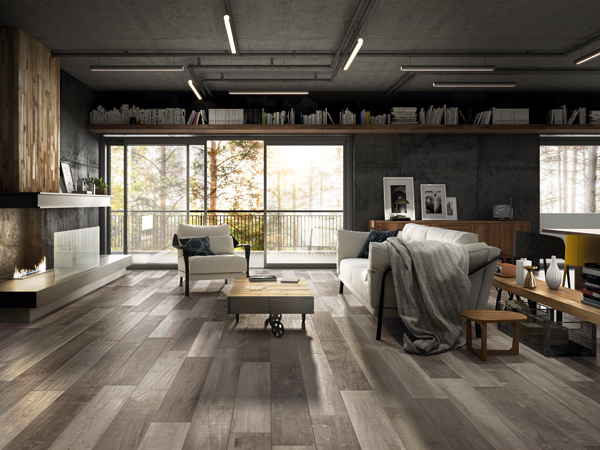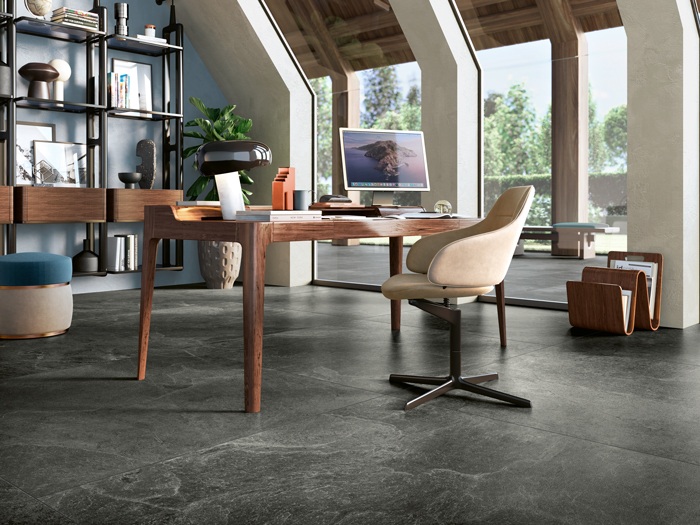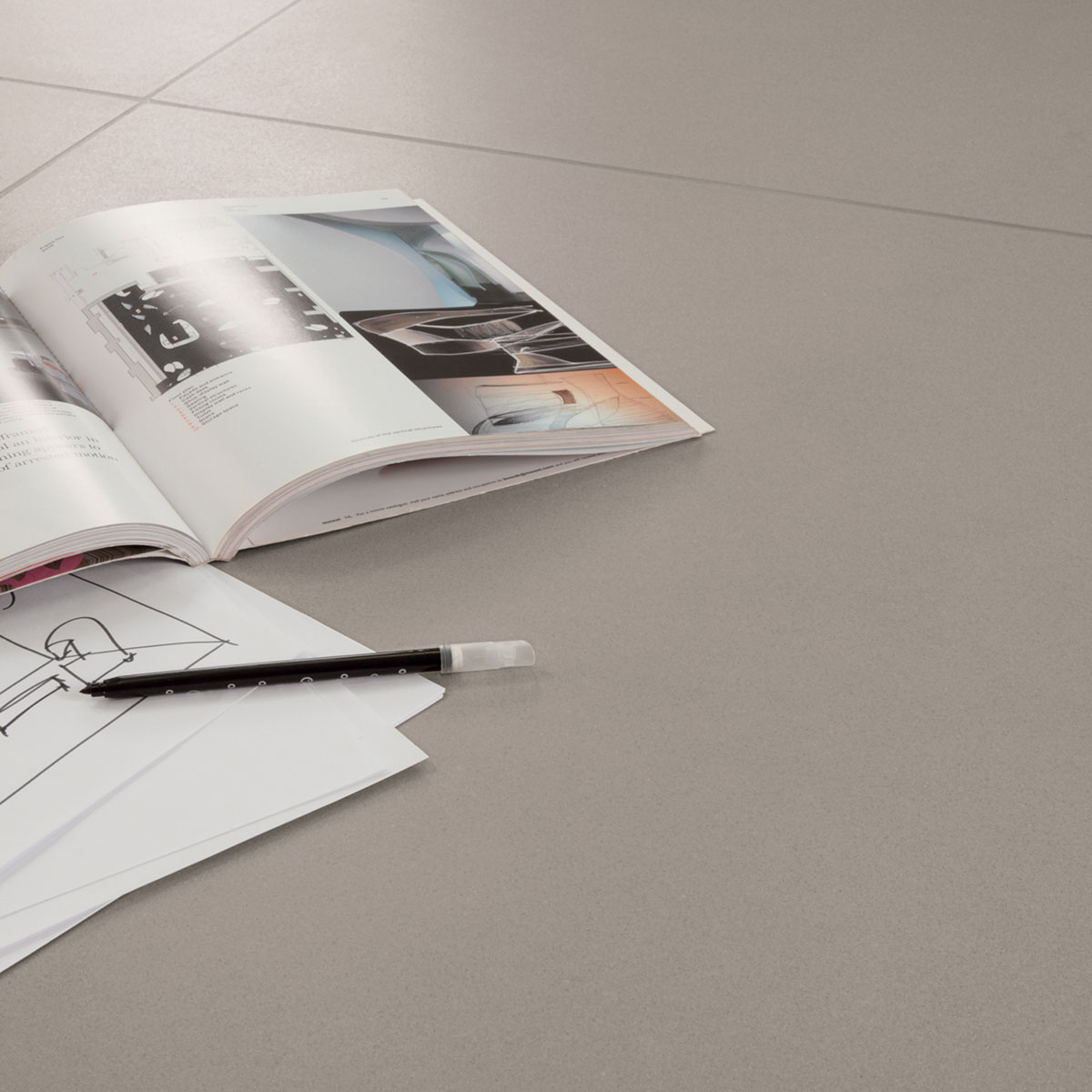The primary goal for those dealing with a small bathroom is to maximise space, not only in order to improve functionality, but also to create an elegant and inviting environment that reflects the aesthetic taste of those who live there. What may seem like an insurmountable challenge, can be overcome with a bit of planning and creativity. In this type of renovation, the choice of tiles plays a crucial role because the chosen look and colour will significantly influence the atmosphere of the space, especially if it’s limited.
But let’s take a step back. Why are bathrooms clad in ceramic? Is it mandated by some architectural regulation? Not at all. However, tiles do serve as an effective shield against moisture, a characteristic element of this environment. Without this waterproof barrier, walls could more easily develop mould or stains, which would compromise the appearance of the space and also make it less healthy.
